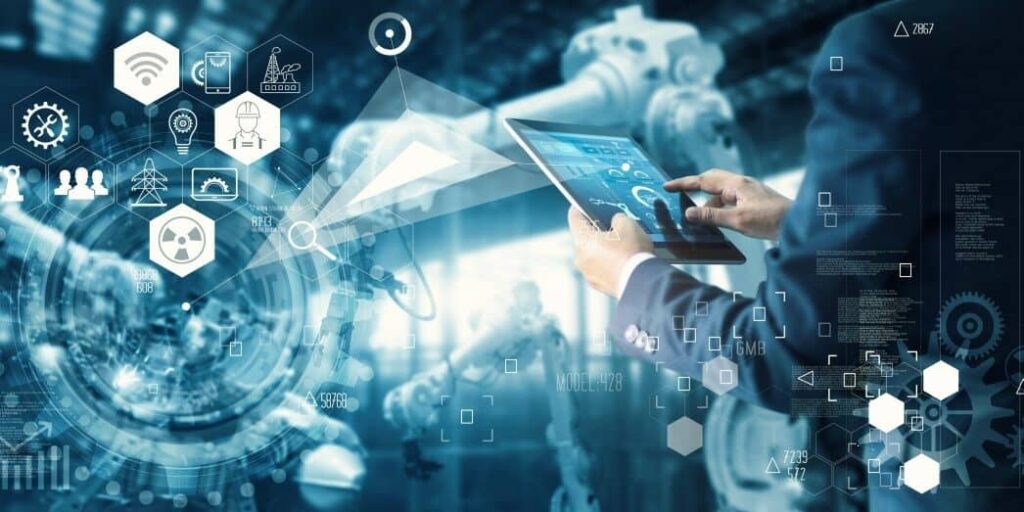In today’s age of widespread digitalization, businesses in nearly all industrial sectors increasingly embrace automation and digital transformation to streamline their operations. An area that has been particularly experiencing growth in recent years is the maintenance of assets, especially in the realm of asset management software. These software solutions empower companies to boost their efficiency, minimize downtime, and prolong the life of their equipment. In this article, we will delve into some of the key trends in developing asset management software solutions.
1. Utilization of Cloud-based Platforms for Improved Accessibility and Collaboration:
With businesses expanding and teams becoming more and more geographically dispersed, cloud-based industrial asset management software is gaining significant popularity. This innovation enables users to access data and information from any location with an internet connection. Furthermore, it fosters real-time collaboration among team members by allowing them to work together on a shared platform simultaneously. Cloud-based asset management software enhances flexibility and efficiency while reducing IT expenses.
2. Integration of Internet of Things (IoT) Technology:
The Internet of Things (IoT) has brought about transformations across various industries, including industrial maintenance. IoT devices can now be seamlessly incorporated into asset management systems, facilitating real-time monitoring of conditions and predictive analysis. When IoT is integrated, machines can communicate with the software system, providing insights into their performance metrics like temperature, vibration levels, and energy consumption. This integration enables maintenance teams to proactively tackle issues before they escalate and cause downtime or equipment failures.
3. Using Artificial Intelligence (AI) for Predictive Maintenance:
AI technology is utilized to create algorithms that can forecast equipment failures based on data patterns. By analyzing volumes of machine-generated data over time, AI-driven asset management systems can detect anomalies or deviations from behavior patterns, anticipating potential breakdowns through predictive maintenance strategies.
4. Automation for Streamlined Workflows:
Automation plays a role in improving efficiency in maintenance processes by reducing human errors, ensuring quicker response times, and optimizing resource utilization. By automating maintenance tasks such as work orders, equipment inspections, and data collection, businesses can streamline their operations into efficient and cost-effective processes. Automated asset management software guarantees adherence to schedules and documentation accuracy while eliminating the need for manual intervention.
5. Augmented Reality (AR) for Enhanced Training and Troubleshooting:
The incorporation of augmented reality (AR) into asset management software is revolutionizing how training programs are conducted and troubleshooting tasks are carried out. AR enables maintenance technicians to receive real-time guidance by overlaying content on equipment. This technology helps technicians visualize instructions from experts while they perform maintenance procedures or repairs, improving training efficiency and reducing the likelihood of human errors during critical tasks.
6. Utilizing Blockchain Technology for Secure Data Management:
Blockchain technology is increasingly acknowledged for its capacity to provide data storage and transparency across industries. Asset management systems leveraging blockchain technology have the potential to offer tamper records of asset ownership, transfers, and warranty tracking by ensuring a data structure that prevents modifications or deletions through traceable transactions logged on a decentralized ledger distributed among multiple nodes.
Conclusion
The future of maintenance hinges on advanced asset management software solutions that integrate cloud computing capabilities, AI-driven predictive maintenance, automation features, AR-based troubleshooting techniques, and blockchain-enabled secure data management. These advancements empower companies to enhance their maintenance operations by eliminating inefficiencies while maximizing productivity and profitability—ultimately fostering a profitable business model.
As technology progresses, companies can use these developments to improve their ability to monitor the performance and lifespan of assets. This helps reduce downtimes caused by equipment malfunctions. Whether it involves using AI algorithms for analysis or providing technicians with augmented reality training before they go out for repairs, businesses need to take advantage of the opportunities presented by asset management software today. They need to stay competitive in the evolving landscape that is being transformed digitally for tomorrow.







